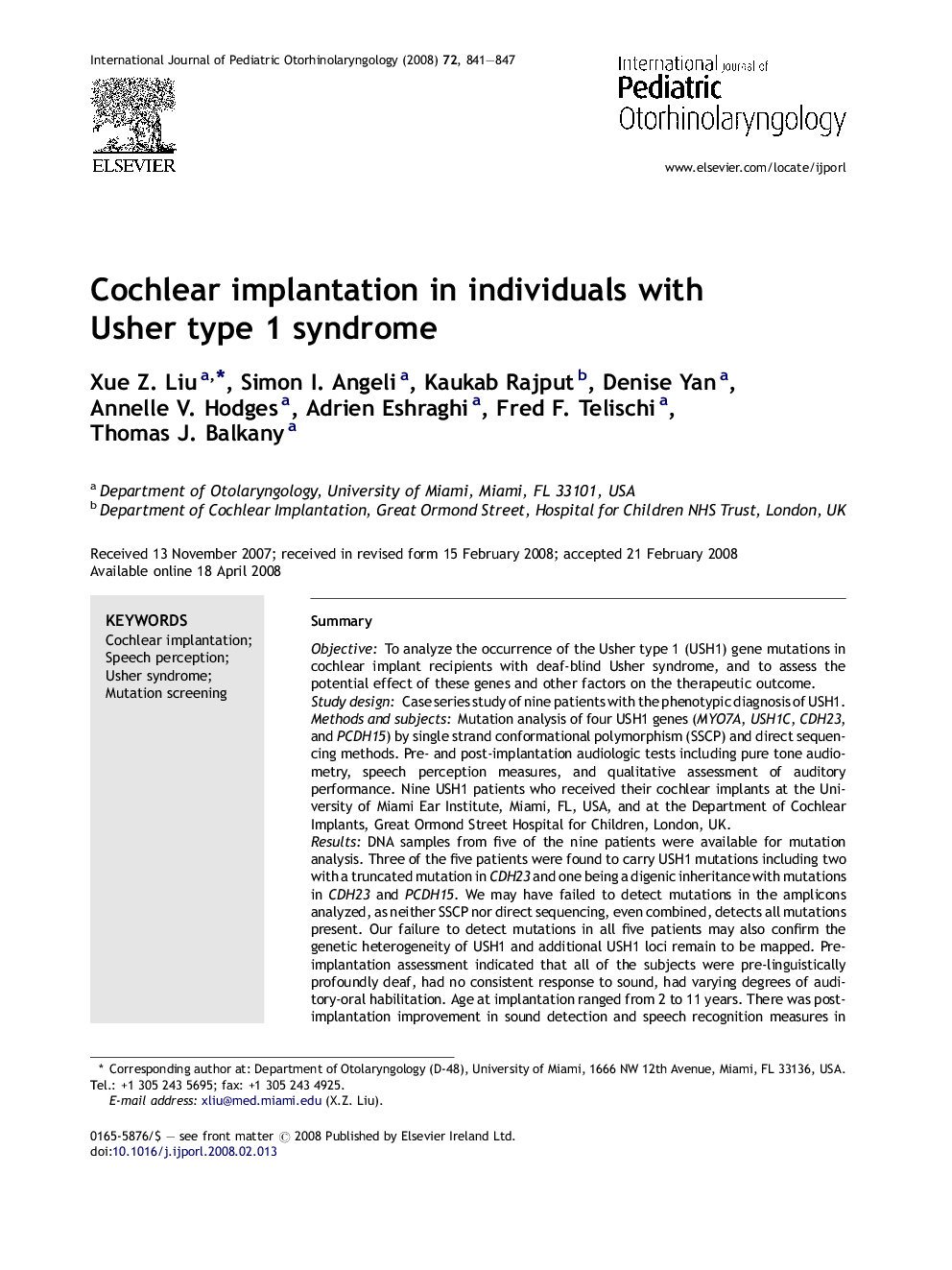| کد مقاله | کد نشریه | سال انتشار | مقاله انگلیسی | نسخه تمام متن |
|---|---|---|---|---|
| 4114127 | 1606082 | 2008 | 7 صفحه PDF | دانلود رایگان |

SummaryObjectiveTo analyze the occurrence of the Usher type 1 (USH1) gene mutations in cochlear implant recipients with deaf-blind Usher syndrome, and to assess the potential effect of these genes and other factors on the therapeutic outcome.Study designCase series study of nine patients with the phenotypic diagnosis of USH1.Methods and subjectsMutation analysis of four USH1 genes (MYO7A, USH1C, CDH23, and PCDH15) by single strand conformational polymorphism (SSCP) and direct sequencing methods. Pre- and post-implantation audiologic tests including pure tone audiometry, speech perception measures, and qualitative assessment of auditory performance. Nine USH1 patients who received their cochlear implants at the University of Miami Ear Institute, Miami, FL, USA, and at the Department of Cochlear Implants, Great Ormond Street Hospital for Children, London, UK.ResultsDNA samples from five of the nine patients were available for mutation analysis. Three of the five patients were found to carry USH1 mutations including two with a truncated mutation in CDH23 and one being a digenic inheritance with mutations in CDH23 and PCDH15. We may have failed to detect mutations in the amplicons analyzed, as neither SSCP nor direct sequencing, even combined, detects all mutations present. Our failure to detect mutations in all five patients may also confirm the genetic heterogeneity of USH1 and additional USH1 loci remain to be mapped. Pre-implantation assessment indicated that all of the subjects were pre-linguistically profoundly deaf, had no consistent response to sound, had varying degrees of auditory-oral habilitation. Age at implantation ranged from 2 to 11 years. There was post-implantation improvement in sound detection and speech recognition measures in closed-set format in all patients. Children implanted at an age of 3 years or less showed good open-set speech perception with lip-reading. All patients are implant users. Those patients who do not show open-set perception still use the cochlear implant as an adjunct of lip-reading or total communication.ConclusionTesting for mutations in the USH1 genes allows early identification and intervention of children with USH1; timely intervention is important to maximize the development of useful auditory-oral communication skills prior to the onset of the visual impairment.
Journal: International Journal of Pediatric Otorhinolaryngology - Volume 72, Issue 6, June 2008, Pages 841–847